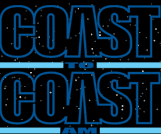Moscow Air Force Station
45°08'14"N 69°48'07"W
In 1970 Air Force Rome Air Development Center [RADC] engineers developed and constructed components for a frequency modulation/continuous wave (FM/CW) radar capable of detecting and tracking objects at over-the-horizon ranges. The radar installation and evaluation was accomplished on 15 September, while flight tests of a Beverage array antenna were completed on 30 September. On 30 October 1970 the radar and the Beverage array were integrated and operated as a single system for the first time.
The prototype was built in Maine, with the transmitter at Moscow Air Force Station [45°08'14"N 69°48'07"W] and the receiver at Columbia Air Force Station [44°47'42"N 67°48'41"W]. Experimental transmissions from the Maine site covered an arc from 16.5° to 76.5° and from 900 to 3,300 km in range. Initial testing was conducted from June 1980 to June 1981.
With the end of the Cold War, the three radars in Maine were
redirected to counter-narcotics surveillance. In 1994 the
Congress directed the Air Force to continue operating the
East Coast OTH-B radar at no less than a 40 hour per week
schedule, and to ensure that all OTH-B tracking data was
transmitted directly to DOD and civilian agencies. The Air Force
maintains the six East Coast and West Coast OTH-B radars in a
state called “warm storage,” which preserves the physical and
electrical integrity of the system and permits recall within 24
months.








![[Most Recent Quotes from www.kitco.com]](http://kitconet.com/images/quotes_7a.gif)



